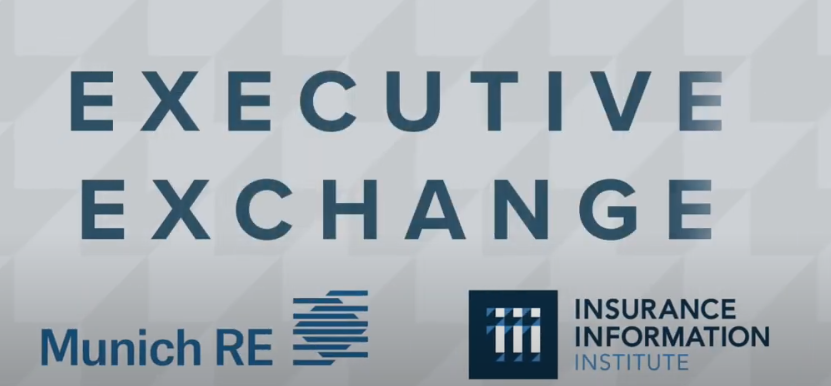
For insurers, “customer” is one word that encompasses individual policyholders, business owners, risk managers, agents and brokers, and others, all with different (often divergent) priorities. For reinsurers – whose primary customers are insurers themselves – “understanding the customer” is particularly challenging.
This was part of the motivation behind RiskScan 2024 – a collaborative survey carried out by Munich Re US and Triple-I. The survey provides a cross-market overview of top risk concerns among individuals across five key market segments: P&C insurance carriers, P&C agents and brokers, middle-market business decision makers, small business owners, and consumers. It explores not only P&C risks, but also how economic, political, and legal pressures shape risk perceptions.
“I get very excited when we have a chance to be in our customers’ shoes,” said Kerri Hamm, EVP and head of cyber underwriting, client solutions, and business development at Munich Re US, in a recent Executive Exhange interview with Triple-I CEO Sean Kevelighan. “To really understand how they feel about a broad range of issues from what are their most important risks to how they feel about the cost of insurance and the economic environment.”
Hamm discussed how more than one-third of respondents ranked economic inflation, cyber risk, and climate change as top concerns, identifying them as “increasing or resulting in rises of the cost of insurance.”
“When we really understand what our customers want, we can design a better product and think about whether the coverages we’re providing are meaningful to them,” Hamm said. “That can help us match pricing better to their expectations.”
One result that Hamm found “surprising” was that “legal system abuse” didn’t appear to be as widely accepted by respondents – apart from the insurance professionals – as driving up insurance costs. Kevelighan cited other research – including by Triple-I’s sister organization, the Insurance Research Council – that has found consumers to be aware of the growing influence of “billboard attorneys”.
Unfortunately, he said, “They don’t seem to be making the connection with how that’s affecting them. What we’re trying to do at Triple-I is to help them make that connection.”
Kevelighan talked about Triple-I’s education campaign around “the billboard effect” in Georgia. That campaign includes an actual billboard (“Trying to fight fire with fire,” he said), as well as a microsite called Stop Legal System Abuse. The campaign focuses on Georgia because the state tops the most recent list of places that the American Tort Reform Foundation calls “judicial hellholes”.
“We’re trying to help citizens in Georgia see that this is costing you,” Kevelighan said, adding that Triple-I has seen high engagement through the program with people in the state.
Learn More:
Triple-I “State of the Risk” Issues Brief: Legal System Abuse (Members only)
Triple-I Launches Campaign to Highlight Challenges to Insurance Affordability in Georgia
Louisiana Reforms: Progress, But More Is Needed to Stem Legal System Abuse
JIF 2024: What’s In a Name? When It Comes to Legal System Abuse, A Lot
Climate Resilience and Legal System Abuse Take Center Stage in Miami
Agents Play Critical Role in Navigating Impacts of Legal System Abuse on Customers
Legal System Abuse/Social Inflation Adds Costs and Challenges for US Casualty Insurance: AM Best
Who’s Financing Legal System Abuse? Louisianans Need to Know














